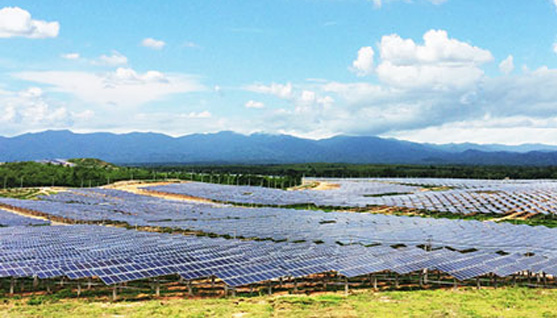California solar industry expert Barry Cinnamon recently presented his forecast for the US residential solar and energy storage market and technology development in 2020 and the next 10 years.
It is not easy to predict future developments, especially as the solar and energy storage industries adopt emerging technologies and face higher requirements. Here are some predictions, and I hope that the predictions for user-side energy systems are roughly correct.
1. The matching deployment of energy storage systems and solar power generation systems will become the standard
Solar power facilities are rarely deployed independently today. Changes in net metering, unreliable utility power, lower battery costs, grid service functions, and energy management functions will drive customers to choose more full-service solar power generation facilities and battery energy storage systems. When necessary, the solar power facility contractor's business will expand to backup panels and communication cable wiring, as well as complex commissioning and configuration procedures.
2. Need for new cost indicators
For more than 20 years, the solar industry has been measuring costs based on installed capacity. However, adding a battery energy storage system to a solar power generation system adds cost and confuses energy conservation calculations. It is hoped that experts from the National Renewable Energy Laboratory (NREL) and the Lawrence Berkeley National Laboratory (LBNL) will better explain these new indicators.
3. Is there a corresponding application? Mobile applications are the standard for customer system monitoring. In order for these applications to work properly, reliable inverter communication must be done with a server somewhere in the cloud. Although Wi-Fi, ZigBee, and Bluetooth protocols are convenient and relatively inexpensive, they depend on the customer's router and Internet connection. Hard-wired Ethernet or high-bandwidth cellular protocols are more suitable for the reliable communications required by customer applications.

4. Software is more and more important Experienced solar and energy storage system contractors will select systems based on software features: customer applications, installer debugging, management interface, utility interface. Regardless of the capabilities and functions of the hardware, there is a certain cost to adopting the software.
5. Net costs rise instead of fall As labor, inverter, and rack costs rise, energy storage manufacturers are increasing energy storage system licensing fees and safety requirements, and their regulations are more stringent (especially battery deployment). Customers expect more integration with existing electrical systems. To make matters worse, the gradual reduction of investment tax credits will increase the cost of energy storage system deployment by 4% in 2020, and 4% in 2021, and 12% to 22% in 2022. But lower hardware costs will not offset these higher soft costs.
6. Integration of battery and inverter Unlike solar modules, which are interchangeable with almost all inverters, battery storage systems will be designed and branded by inverter companies. The integration between the battery and the inverter is specific to maintain its integrity, performance, and ease of installation. The contractor wants a point of contact for solar and energy storage systems.
7. No standard energy system interface Lack of coordination between various residential energy systems (solar energy, energy storage, electric vehicles, HVAC, lighting, etc.) and major home application providers Google and Apple. Security requirements and a lack of industry standards mean that there is at least five more years to integrate these devices. In the meantime, dedicated applications for each major device will continue to be available on mobile phones.
8. Battery performance will remain challenging The reliability and expected performance of solar systems have been fully demonstrated. However, the performance of battery systems depends on more variables (temperature, usage, building consumption, battery reliability, operating characteristics), which makes it easier to exaggerate the benefits of these systems, and it is almost impossible to predict the cost savings.
9. Electric cars use better-performing batteries As electric vehicle manufacturers strive to develop and adopt batteries to increase the range of electric vehicles, it may take five to ten years to adopt more suitable batteries.
10. Dawn of development of industrial and commercial energy storage About two years ago, residential battery energy storage systems began to develop rapidly when industry-leading inverter and battery companies released well-integrated turnkey solutions. When these companies introduce battery storage systems based on existing solar inverters, commercial and industrial energy storage customers will achieve the same growth. Solar, wind, and energy storage systems will play a vital role in reducing carbon dioxide emissions that cause global warming. The energy industry will continue to intensify this issue and provide the most practical, influential and cost-effective solutions.
Next: PV systrem
Copyright:@2020-2021
Comments Please sign in or sign up to post.
0
0 of 500 characters used